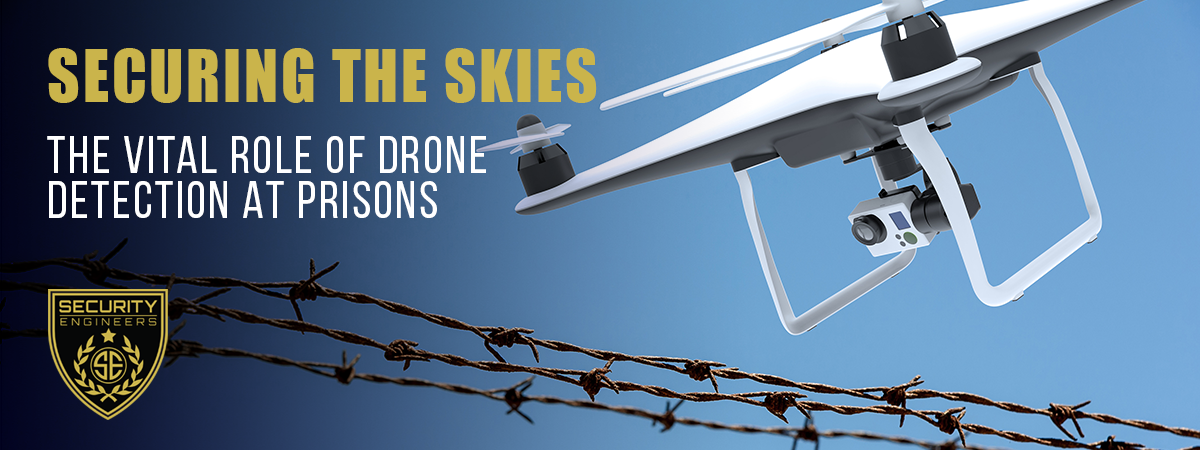
Securing the Skies: The Vital Role of Drone Detection at Prisons
Introduction
In an age marked by technological advancements, the use of drones has expanded into various domains, both beneficial and potentially detrimental. One area where the threat of drones has become increasingly pronounced is in the realm of prison security. The importance of drone detection at prisons cannot be overstated, as the illicit use of drones to smuggle contraband, gather intelligence, or facilitate escapes poses a significant challenge to the security of correctional facilities. In this blog post, we will delve into the pressing need for effective drone detection systems within prisons and explore the implications of neglecting this critical aspect of security.
The Growing Threat
Prisons are designed to keep offenders securely confined within their walls, away from society. However, the advent of consumer drones has provided inmates and external actors with a novel means to breach these boundaries. Drones are small, discreet, and capable of carrying contraband or facilitating covert activities within prison compounds. With the rise of this aerial threat, correctional facilities have had to adapt rapidly to safeguard their inmates, staff, and the general public.
Contraband Smuggling
One of the most pressing concerns associated with drones in prisons is the smuggling of contraband. Drones equipped with payloads of drugs, weapons, cell phones, or other prohibited items can easily bypass traditional security measures, posing a severe risk to the safety and order of the facility. Detection and interception of such drones are essential to preventing these illicit deliveries.
Security Breaches
Drones also pose a threat by enabling reconnaissance and security breaches. They can be used to gather intelligence on prison layouts, routines, and vulnerabilities, providing valuable information for escape attempts or illicit operations. Effective drone detection helps thwart these reconnaissance efforts and safeguards the prison’s overall security.
Escape Attempts
The prospect of inmates using drones as tools for escape is a nightmare scenario for prison authorities. Drones can transport escape tools, such as cutting equipment or ropes, into the prison, making it easier for inmates to execute daring breakouts. Promptly detecting and responding to such drone activity can prevent these attempts from materializing.
Public Safety
Beyond the immediate risks to the prison facility, unregulated drone activity within or around prisons can pose a danger to the public. Inmates who manage to escape with the aid of drones could potentially commit crimes once outside, threatening the safety of the surrounding communities. Effective drone detection helps mitigate these broader security concerns.
The Need for Drone Detection Solutions
To counter the growing threat of drones in prisons, correctional facilities must invest in advanced drone detection technology. These solutions typically employ a combination of radar, radio frequency (RF) detection, and visual monitoring systems to identify and track drones entering or operating near the facility.
Benefits of Drone Detection
1. Timely Intervention: Drone detection systems provide real-time information, enabling rapid response and interception of drones before they can drop contraband or facilitate escapes.
2. Enhanced Security: By actively monitoring airspace, these systems enhance overall security by detecting potential threats before they escalate.
3. Deterrence: Knowing that a prison facility has robust drone detection capabilities can act as a deterrent, dissuading individuals from attempting illicit drone activities.
4. Legal Compliance: Correctional facilities must comply with regulations governing drone detection and countermeasure use, ensuring that they adhere to legal standards while safeguarding their operations.
Conclusion
In an era where technology can be both a boon and a bane, prisons must adapt to the evolving landscape of security threats. The importance of drone detection at prisons is undeniable, as it directly impacts the safety of inmates, staff, and the broader community. By investing in advanced drone detection systems and staying one step ahead of those seeking to exploit this technology, correctional facilities can maintain a more secure and controlled environment, ultimately fulfilling their mission of rehabilitation and public safety.